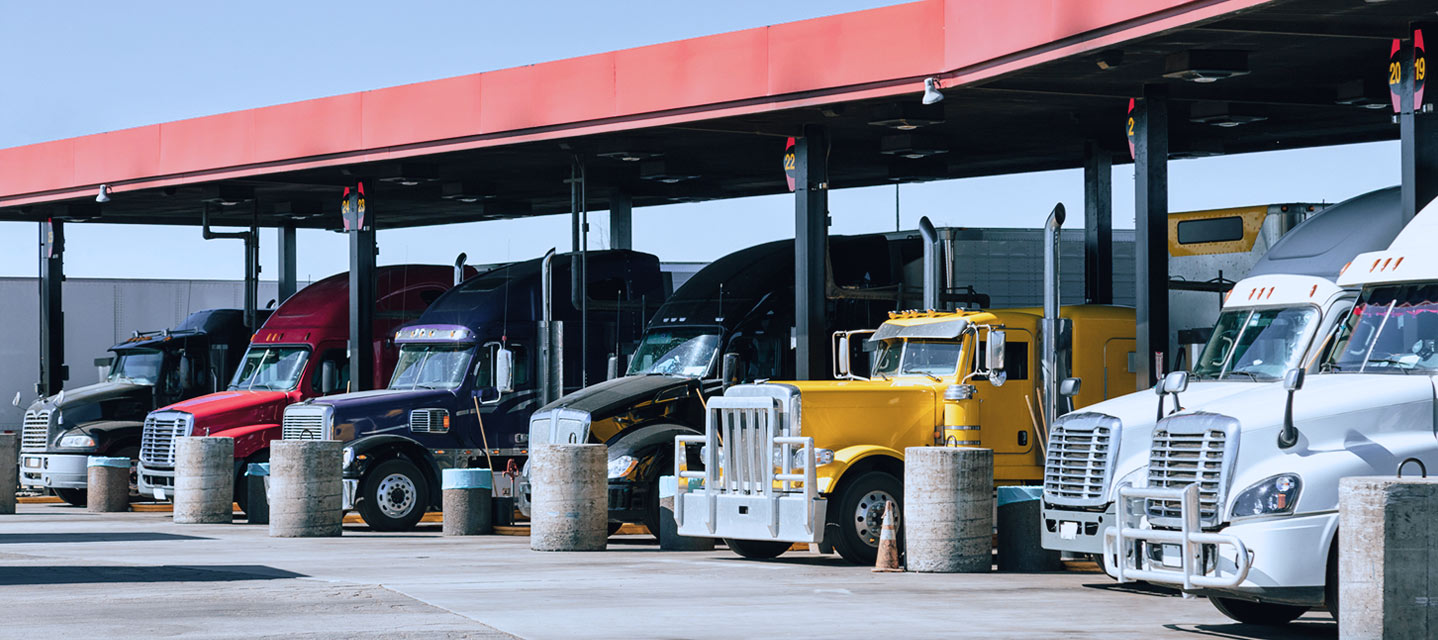Truck driver retention strategies: How telematics can help
Top-performing drivers are an invaluable asset to any fleet. Here are some strategies to help you retain high-performing truck drivers.
By Geotab Team
Feb 2, 2021
Updated: Mar 7, 2022

According to the American Transportation Research Institute’s Critical Issues in the Trucking Industry, driver retention is one of the top 10 issues facing the commercial trucking industry. Keeping drivers on board is necessary to stop reliable drivers moving from one fleet to another — or even worse, leaving the industry all together. Read on to learn seven strategies to retain high-performing drivers.
The reality of today
While the trucking industry has long faced a driver shortage and issues with driver retention, the COVID-19 pandemic made the situation worse. Some sectors of the industry including those delivering food products, PPE products and medical supplies were under immense pressure to keep shelves stocked. In many cases, The Federal Motor Carrier Safety Administration (FMCSA) temporarily suspended Hours of Service requirements to ensure that essential items were delivered where and when they were needed.
Other factors that reduced the number of eligible drivers was the fact that both truck driver training schools and truck driver testing facilities were closed because of COVID-19 restrictions so the pipeline of new drivers entering the industry slowed down.
As the economy begins to strengthen, fleets will again be feeling the impact of the driver shortage, and it is likely that we will again see high churn levels at fleets as drivers will once again have their choice of places to work.
Why do truck drivers quit?
Drivers quit for a variety of reasons: poor pay, time away from home, issues with the schedules, clashes with their supervisors and poor quality equipment could be a few possible reasons.
Retiring drivers are another factor contributing to the driver shortage . In addition, many young people are not attracted to the trucking industry because of the long hours away from home and the physically taxing nature of the work. If current trends continue, the driver shortage — which was 50,700 in 2018 — could swell to 160,000 by 2028, according to the American Trucking Associations.
Turnover is an issue at both small and large fleets. That is an important metric to monitor as carriers continue to compete for the best drivers from an ever-shrinking pool of available candidates. According to ATRI’s An Analysis of the Operational Costs of Trucking: 2020 Update, 43% of trucking’s operational costs are related to drivers and driver compensation.
Fleets are employing a variety of strategies to attract qualified drivers including offering sign-on bonuses, moving away from hourly pay, and adding performance and productivity-based bonuses.
Seven strategies for retaining truck drivers
Here are seven ways to improve driver retention:
1. Increase driver pay
As freight capacity tightens, some companies have announced pay hikes. To stay competitive, certain fleets increase pay in order to ensure they have enough drivers to move freight.
2. Reward top performers
While a fleet cannot overlook unsafe driving practices, in addition to punishing bad driving behavior, try rewarding the top performing drivers. Identify stellar drivers based on a variety of factors such as speeding, seat belt usage, braking habits and acceleration. Offer bonuses to individuals with high safety scores to help with retention. Another option for recognizing top performers and motivating drivers is fleet gamification.
3. Help support drivers’ mental health
Driving a truck is both physically and mentally demanding. Driving during the COVID-19 pandemic has only added to driver stress levels. Encourage drivers to get enough sleep and exercise and to spend time outdoors or use other techniques like mediation to reduce stress. Support them if they report instances where COVID-19 safety protocols are not being followed. They need to know that their health, safety and well-being are extremely important to fleet management.
4. Optimize routes
More drivers are expressing an interest in being home on a more regular basis. In fact, the regional haul segment of trucking is growing. Shortening trip times and routes is one way to both get freight delivered and see that drivers have more at home time. By optimizing routes, you can reduce the time a driver is out on the road while still operating efficiently and profitably.
5. Improve communication with drivers
Messaging tools between drivers and dispatchers helps to reduce errors, cut down on wasted time and increase on-time deliveries. Continuous communication takes the guesswork away from the driver and helps them complete their job more efficiently and effectively.
6. Provide better training
Better training allows drivers to improve their skills. It is probably safe to say that most drivers want to do a good job, but may not have the skills needed to be a top performer. Driver training should not be something that happens just during the onboarding process.
On-going training to refresh driver skills can benefit the entire fleet. Detailed insights about driver behavior allows training to be tailored to each specific individual based on what they need to improve on.
7. Invest in vehicle maintenance
Trucks that break down not only affect on-time delivery but can also damage a fleet’s relationship with its drivers. Having well-maintained vehicles helps keep drivers in your fleet. Not having to worry about equipment constantly failing leads to a higher level of driver satisfaction.
Conclusion
Keep the seven tips above in mind when working on your yearly or quarterly strategies to retain drivers. High-performing truck drivers are an asset and an incredibly valuable resource to any business. Their role requires constant and heightened awareness and good judgement. Get more best practices and fleet news direct to your inbox by subscribing to our Geotab newsletter.
Subscribe to get industry tips and insights
The Geotab Team write about company news.
Table of Contents
Subscribe to get industry tips and insights
Related posts

9 strategies to increase fleet fuel efficiency and lower fuel costs
July 8, 2025
4 minute read

Creating a fleet safety culture that’s built to last: Lessons from Missouri DOT and NYC
July 7, 2025
8 minute read


Field service is losing money to bad data: Go beyond GPS with smarter telematics
June 27, 2025
3 minute read


Enhancing winter road maintenance with postseason materials usage analyses
June 20, 2025
6 minute read